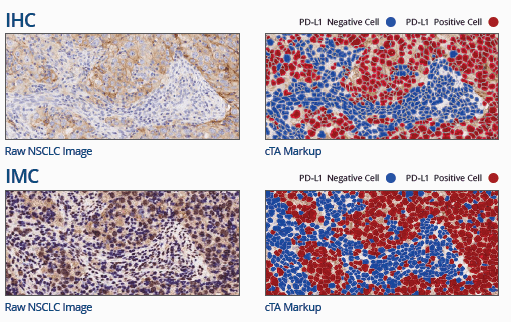Abstract
Multiplexed analysis of limited tissue samples can improve our understanding of tumor biology and the tumor microenvironment. Chromogenic and fluorescent multiplexed immunohistochemistry (IHC) approaches are available and offer great insights while conserving limited tissue; however, these approaches have their limitations. Multiplexed chromogenic IHC methods can at best accommodate up to 3 distinct markers. Fluorescence-based approaches can support a higher degree of multiplexing; however, spectral overlap issues and differences in labeling efficiency and photostability complicate experimental procedures and data interpretation.
Imaging mass cytometryTM (IMC) has recently emerged as a novel technology for tissue imaging that enables multiplexed analysis of protein expression (up to 40 markers) in a single tissue sample while circumventing the limitations of chromogenic and fluorescent IHC techniques. Metal-conjugated antibodies are used to perform qualitative and quantitative analyses of the expression of multiple proteins of interest on a single formalin-fixed, paraffin-embedded (FFPE) tissue slide. Here we compare the performance of the IMC method with that of conventional, established IHC techniques using a small panel of markers.
Conclusion
- Digital image analysis data generated using Flagship’s cTA® platform on FFPE tissue samples subjected to multiplexed IMC platform correlate with data generated from FFPE tissue samples subjected to monoplex IHC.
- The IMC platform is a new tool capable of reliably and dramatically enhancing our ability to study the biology of cancer using a highly multiplexed analysis of limited tissue samples, but it requires companion quantification tools.

